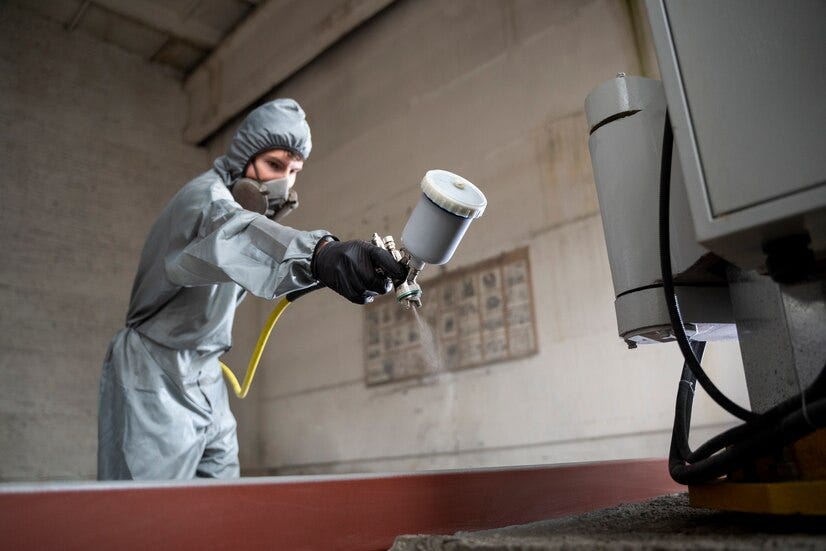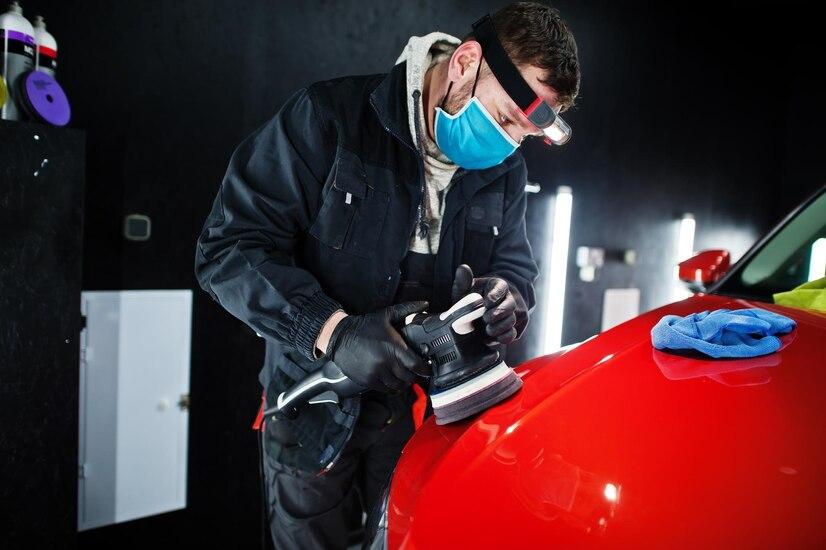
Your car’s paint job is one of the first things people notice. It’s not just about aesthetics; a good paint job also protects your vehicle from rust, corrosion, and damage caused by the environment. Over time, exposure to sun, road debris, and accidents can lead to scratches, chips, and dullness in the paint. Repairing or refreshing your car’s paint can make it look brand new and extend its lifespan. Here’s a comprehensive guide to car paint repair, covering everything from identifying damage to DIY and professional options.
1. Understanding Different Types of Paint Damage

Before you begin any repairs, it’s crucial to identify the type of damage. Car paint damage can range from minor imperfections to serious issues that expose the car’s metal surface. The most common types include:
- Scratches: These can occur from keys, tree branches, or accidental contact with other objects. They vary in depth, with some only affecting the clear coat while others penetrate through the color and primer layers.
- Stone Chips: These are tiny chips in the paint caused by debris or gravel hitting the surface at high speeds. They often appear on the front bumper, hood, or sides of the car.
- Oxidation: Over time, exposure to UV rays can cause the paint to fade and become chalky. This is called oxidation, which primarily affects the car’s clear coat.
- Peeling: In cases where the clear coat begins to separate from the paint, you’ll notice peeling or bubbling areas. This typically happens due to improper application or prolonged exposure to harsh weather conditions.
Once you understand the type of damage, you can decide how to approach the repair.
2. DIY Car Paint Repair: When and How to Do It

For minor scratches, chips, and small areas of fading, a DIY approach can be effective and cost-efficient. Here’s a step-by-step guide to fixing common paint issues on your own:
a. Fixing Scratches

- Assess the depth: If the scratch only affects the clear coat (the top layer), it can usually be buffed out. For deeper scratches that reach the paint or primer, you’ll need touch-up paint.
- Buff out light scratches: Use a rubbing compound or scratch remover to buff out surface scratches. Apply the product using a microfiber cloth, rubbing gently in circular motions until the scratch fades.
- Touch-up deeper scratches: For deeper scratches, clean the area with soap and water, then apply touch-up paint that matches your car’s color. Most manufacturers offer small bottles or pens of matching paint.
b. Repairing Stone Chips
- Clean the area: Remove any dirt or debris from the chip. You can use rubbing alcohol to clean the surface thoroughly.
- Apply touch-up paint: Use a fine-tipped brush or paint pen to carefully apply touch-up paint. Make sure the paint is a perfect match to your car’s original color.
- Finish with clear coat: Once the paint dries, apply a thin layer of clear coat to seal the repair and restore shine.
c. Dealing with Oxidation

- Wash the car thoroughly: Use car soap and water to remove dirt and grime.
- Polish the surface: After drying the car, use a car polish to restore some shine to the oxidized areas. This process may need to be repeated several times for best results.
- Wax for protection: Finish by applying a coat of wax to protect the paint from future oxidation and UV damage.
d. Peeling Paint
For peeling paint, it’s best to visit a professional since the entire panel might need to be sanded and repainted.
3. When to Seek Professional Help

While DIY methods can work well for small issues, larger paint damage should be handled by professionals. If your car has large scratches, extensive oxidation, or peeling, a professional body shop will have the tools and expertise to restore your car’s finish.
Reasons to choose professional repair:
- Color Matching: Professionals use advanced tools to ensure an exact color match with the original paint, which can be challenging for DIY repairs.
- Quality of Finish: A professional job will result in a smoother, more durable finish that lasts longer.
- Dealing with Severe Damage: If the damage has penetrated to the metal, the repair requires specialized equipment to sand, prime, and repaint the surface.
4. Prevention Tips for Maintaining Your Car’s Paint

Maintaining your car’s paint isn’t just about repairs — it’s also about prevention. Here are some tips to keep your car’s paint looking new for as long as possible:
- Regular Washing: Dirt, dust, and road salt can eat away at the paint over time. Wash your car regularly to prevent buildup.
- Apply Wax: Wax adds an extra layer of protection against UV rays, moisture, and debris. Apply it every few months for best results.
- Park in Shade: Prolonged exposure to the sun’s UV rays can fade the paint. Whenever possible, park in the shade or use a car cover.
- Use Paint Protection Films: These clear films protect the paint from minor scratches, chips, and fading, especially on high-impact areas like the front bumper and hood.
How Service My Car Assist You?
Looking for reliable lexus gx ac repair? Is your car’s air conditioning not cooling as it should? Don’t let the heat ruin your driving experience. At Service My Car, we specialize in comprehensive Lexus GX AC repair, from diagnostics to complete system overhauls. Our expert technicians ensure that your AC runs efficiently, keeping you cool on every drive. Whether it’s a refrigerant issue or compressor failure, we’ve got you covered. Book your Lexus GX AC repair service today with Service My Car!
Conclusion
Car paint repair doesn’t have to be intimidating. Whether you’re tackling minor chips or dealing with more serious damage, understanding the process can save you time, money, and frustration. For minor repairs, DIY methods can be effective, but for larger damage, seeking professional help ensures a high-quality finish. By keeping up with regular maintenance and taking preventative measures, you can keep your car looking fresh and vibrant for years to come.



